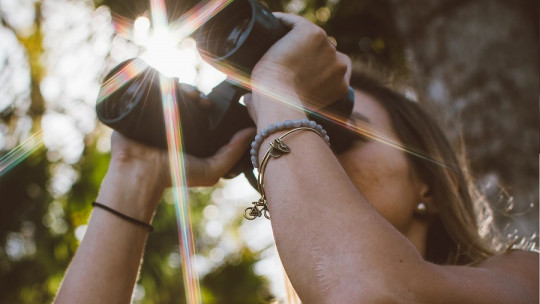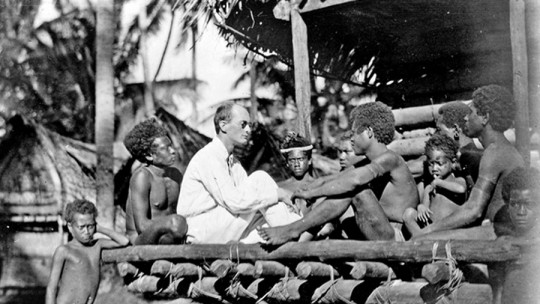
There are many ways to collect data on a given individual, but none as simple and effective as naturalistic observation
We are going to discover the advantages that using this method provides us, what is the way to do it correctly and the differences with other forms of observation, to fully understand this methodology and be able to use it without difficulties.
What is naturalistic observation?
Naturalistic observation is a method used in research and whose foundation is to carry out the observation of a subject or subjects, whether people or animals, doing so directly in the place where they live, without the researcher disturbing them in the slightest in order to avoid any type of interference that would lead to different behavior than if there were no observer there.
Therefore, discretion is essential in naturalistic observation. We must avoid contaminating the setting and interactions, even with our mere presence. Therefore, the perfect example of naturalistic observation is one in which the individual does not realize that he is being observed, so we do not give rise to the possibility that his behavior will be altered by the appearance of a stranger. in their usual environment.
The advantages of using this methodology are evident: we obtain real results, without any type of alteration. The behavior of the individual that we record is what, in fact, must happen in his habitat, under those conditions. On the contrary, if this observation were carried out in an artificial environment, such as a laboratory, we would have to control a multitude of variables and we would never be certain that the observation corresponds to natural behavior.
Besides, Naturalistic observation is the only way, or at least the only one that ethics allows us, to be able to analyze certain events s that, by their nature, it would not make sense to construct artificially, such as those related to a crime. Along these lines, the recordings of the video surveillance cameras and the testimonies of eyewitnesses provide information to make an observation, in this case a posteriori, with which to obtain conclusions and even anticipate a series of behaviors.
Different uses
Talking about the uses of naturalistic observation is, in reality, something almost incomprehensible. And it is that This technique is so useful and so simple to carry out that many disciplines of different kinds.
Of course, one of those that draws the most from it is none other than Psychology, and the science of human behavior needs to be nourished by the most neutral and reliable information possible, which is why naturalistic observation is an ideal method to achieve this. purpose.
In that line, Ethology, the science of animal behavior, may be an even clearer example Whether to study the behaviors of certain species, to know them more deeply, or due to their evolutionary closeness to humans, such as different species of primates (chimpanzees, bonobos or orangutans), since the recorded behaviors would help us to know ourselves better. ourselves, naturalistic observation is a tool of incalculable value.
The clearest example would be the work carried out by the primatologist, Jane Goodall, throughout her entire life. Thanks to her field studies, she used almost solely the method of naturalistic observation. Goodall has observed a society of chimpanzees for no less than 55 years, collecting an infinite amount of data about their social structure, interactions, emotions and other types of behaviors, which we would never have been able to know otherwise.
Naturalistic observation is also very valuable for other sciences, such as criminology, and we already mentioned in the previous point that there is an ethical code that prevents researchers from recreating antisocial behavior in an artificial environment, so they can observe them when they occur. In a real scenario, in order to collect all the data that helps us generate new methods that can avoid them in the future, it is tremendously useful.
Differences with analog observation
In opposition to naturalistic observation, we would find analogical observation, a methodology based on recreating a real situation within a laboratory environment, so, instead of the subject’s natural habitat, we would find ourselves in an artificial environment. We have already sensed throughout the article that these observations in simulated scenarios entail certain disadvantages, since it is possible that the individual will never behave as he would in his natural environment.
But the truth is that It is not always possible to study the behaviors that interest us in the environment in which they naturally occur, so on many occasions researchers are forced to use analogue observation, since the alternative would be to fail to collect any information. In that case, obviously, the logical decision is to use this methodology, being aware of its limitations and taking them into account when analyzing the results.
In any case, if there is no choice but to use analogous observations, the important thing is to do so under the most neutral conditions possible, trying to leave as few variables as possible uncontrolled to achieve results that are as similar as possible to those we would find if we had carried out our research in the real habitat of the individuals.
Observer bias
Although we have already seen that naturalistic observation is much more valuable than analogous observation, the truth is that, in any type of observation, we can encounter a difficulty that, as researchers, we must be aware of in order to mitigate it as much as possible. It is none other than the observer’s expectation bias, which can contaminate the data we record during the session
This bias refers to the influence that the previous expectations that the researcher may have regarding the results of the study can have, so that it can lead to erroneous interpretations of the data collected, somehow guiding the conclusions towards the preconceived idea that was had, which would profoundly weaken the internal validity of the entire research.
The positive part is that it is a perfectly known and studied phenomenon, and it has a relatively simple solution, which consists of the use of a double blind, a type of experimental design in which neither the subjects who are part of the study nor the researchers who carry it out know whether each specific individual is part of the experimental or control group. In this way, naturalistic observation would be more reliable, eliminating this possible bias.
Electronically activated recorder
Finally, we are going to learn more about a technique that has been used in recent years to carry out some types of naturalistic observation. Is about the use of the electronically activated recorder, or EAR, for its acronym in English (Electronically Activated Recorder). This device is designed for observations carried out on a fairly large population sample and over a relatively long period of time, which represents an important advance in the use of this popular methodology.
Since, under these conditions, the amount of data collected would be so enormous that we would have serious difficulties in analyzing it correctly, what is done is to use this small recorder, which the person wears attached to their belt or somewhere else on their body, and It turns on automatically during certain periods of time, to record sounds from different time frames. Thus we achieved a sample of recordings from many different moments and from a multitude of people.
Thanks to the EAR methodology, The doors have been opened to carry out the naturalistic observation method in very large populations This represents a great advance, since, with the technical and human resources of the usual studies, the classic approach was to use a small sample, and from there the results would have to be extrapolated to the general population. On the other hand, we now have the option of carrying out large-scale studies, and at affordable costs, which opens the doors to much more ambitious research.
It is another example of how the development of technologies allows us to continue advancing on the path of knowledge, making science enriched by new methodologies or classic methodologies that evolve and adapt to new times, as is the case of naturalistic observation with electronically activated recorder. We must continue to monitor new progress and thus have at our disposal the most cutting-edge tools to develop new and enriching research.








